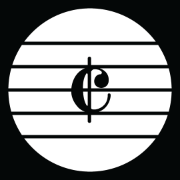Leaderboard
Popular Content
Showing content with the highest reputation on 07/07/2023 in all areas
-
This question can actually be rephrased as "How do you find inspiration to compose your piece" since developing themes and motives is a creative process. There isn't a general rule for coming up with these because it is pretty subjective. Here's what I can share with you: it is important that the themes or motives be formed naturally in your mind, and don't dwell on them and force ideas to come. Good ideas don't come in this manner. Creative ideas are often formed when you engage in certain activities, such as taking showers, exercising, and meditating. Your mind is relaxed when you perform these activities, and inspiration usually sparks this way. This is according to my experience. Good ideas are sometimes formed when you dream, and this works for me most of the time. Practising lucid dreaming is key to acquiring ideas for your composition, and these ideas are usually better than the ones you come up with when you are awake. Improvisation is another method. If you just can't come up with good themes or motives, go and pick up your instrument and start playing whatever comes to your mind. Try out different possibilities and hear which one sounds the best to your ear. That is how I find inspiration for my compositions; however, other composers may have different ways of doing this. I hope this helps. Carl Koh Wei Hao2 points
-
Hey @olivercomposer, This is very enjoyable music! I love the fact that you are featuring the upper register of the piano and it really makes the music clear as crystal and moonlight. That flat submediant and minor subdominant in the middle section is very lovely particularly that that minor subdominant is a Db minor. I remember Peter keeps asking this haha and you are doing a really great job here. I initially interpret the opening as Bb minor with some Dorian influence but later found that it's in F minor anyway. It helps with the paleness suggested by the title by having an ambiguity in tonality as well! It also helps with that smooth retransition after the middle section, since Bb minor is a great pivotal chord! The picardy third tainted with Db minor is very romantic and appears in many romantic pieces and produces a hazy effect here. Nice job and thanks for sharing! Henry2 points
-
Hi! I post this since I'm bored and I have withheld this recording for too long a time... This is the Scherzo second movement of the A major sonata (2014-2015). The first movement is posted here in Jan 2023: Piano Sonata no.1 2nd Mov.pdf Scherzo Piano Sonata no.1.mp3 It's in F major but the influence of the original tonic and C# minor is predominant in the movement, and the use of motive is saturated here. The structure of the movement is quite simple: 0:04 Scherzo (Forgive my breathing lol). Ends on A major with direct quotation of the opening motive in the first movement. Wanders through C sharp minor. I like that secret quotation in the LH bass-line in 1:07 2:53 Trio. A fugato using the inversion of the opening motive as in the first movement. I will say this part is too pretentious to strive for difference for the 5/4 time signature and the inversion in C# minor. Quote the opening motive directly in 3:59. (Forgive my breathing again...) 4:03 Scherzo reprise without all those repetition. 5:27 Coda, using the elements from the trio, leads straight through to the Db major third movement which I don't know whether I will play it or not since it's not too good. I quite like the vivacity of this movement. But for me the treatment in the middle section and forcing it to C# minor, though a cohesion device to link the movements, is too artificial for me now. Let me know what you think! Hope you enjoy the movement! The recording is played by myself and I know it's not perfect, but I have tried and this is fairly good for me. Here's the youtube link: P.S I don't think I will practice and record the third and fourth movements of the Sonata since they are not so good. Even if I have time I will reserve it to practice the final movement of my 2nd Sonata and the first movement of my 3rd Sonata. Henry1 point
-
1 point
-
Outsdanding performance! You are a virtuoso! You have created a composition that not only challenges the boundaries of technical ability but also captures the hearts of all who listen. The precision and dexterity with which you play are absolutely breathtaking. Your composition embodies a vibrant energy that electrifies the atmosphere. The lightning-fast runs and intricate passages showcase your technical mastery, while the dynamic nuances and expressive phrasing add a layer of depth and emotion to the performance. It's an absolute thrill to listen to!1 point
-
Hi Henry, This is a well-written and enjoyable Schubertian scherzo! It is a lively piece, and the rhythm does not feel like 3/4 to me but 6/8. And 176 dotted half-notes a minute seems too fast for me - that's 528 quarter notes per minute! Yet, you manage to retain clarity in your recording, and it is a fantastic performance. Great job! The modulation to C-sharp minor towards the trio section sounds smooth to me. Although the time signature for the trio section is not traditional, the flow of the music does not feel jagged at all. I have not ventured into irregular time signatures, and your attempt to use it in your scherzo is a remarkable breakthrough. Excellent counterpoint writing as well. I have just listened to the first movement of your sonata, and I must say this is an impressive creation! Keep up the good work, and thank you for sharing this piece! Carl Koh Wei Hao1 point
-
Hi @Henry Ng Tsz Kiu I don't what would be YC forum without you reviewing every single post hahaha. Thanks for your feedback!1 point
-
Hey @Samuel_vangogh, Maybe it's because there's mood, key and tempo change all at once. I think a Beethovanian style does not change this rapidly. I think you can add a transition with more excitement added to the second theme in b.21, for example the accompaniment can be more and more compact and a accel. passage will be great. I think for the first section (b.1-20) the texture is not thick and dramatic enough to be Beethovanian, especially when there are many gaps in the piano part. Adding accompaniment (possibly quavers) and thickening the texture will help, as many of Bee's violin sonatas are fully compact. When the violin (and viola here) is not playing the melody, it will play the accompaniment for the piano that carries the melody. I think the second section (b.21-42) the most Beethovanian with the pacing and texture. The third section (b.43-58) acts great as the beginning of a more relaxing 2nd subject before getting excited in the codetta. Thx for sharing! Henry1 point
-
Hey Guys, I composed this today. I'm curious about what you think. Please, leave a comment! (I hope the SoundCloud player won't disappear! 😄)1 point
-
My first post here, verifying for competition. Written a few months ago, probably the most linear and straightforward piece I’ve successfully written.1 point
-
Hello @popsinn, Welcome to the forum! Will you also provide the pdf score of the music so that we can review it with more details ? I feel like this is indeed linear and straightforward. I like the occasional tone clash. The 1:33 middle section is probably my favourite part with frequent modulation. Thanks for sharing!1 point
-
As long as your score shows the listener everything that is being played and there are no accompaniment pattern presets being triggered by just hitting a chord in the left hand then that's fine. Everything that's played must be notated explicitly though. Yes, even though it can play more than one note at a time, it is still considered a monophonic instrument like the instruments in the traditional string orchestra. Yes that's allowed.1 point
-
Hi @Beethoven is God, I have absolutely no clue on how the themes and motives are bron, since they always come with me in sudden realization and inspriation, and then I will start analyzing it for development and ask my muse for more inspiration. That's one of my weak aspect too. I only know that I have to keep the music as flowing as possible by creating a special temporal experience. Henry1 point



.thumb.png.8b5b433a341551e913a34392660bc95b.png)
.thumb.jpg.e5f26b712b4f9622f521b10d8a53c6d6.jpg)


